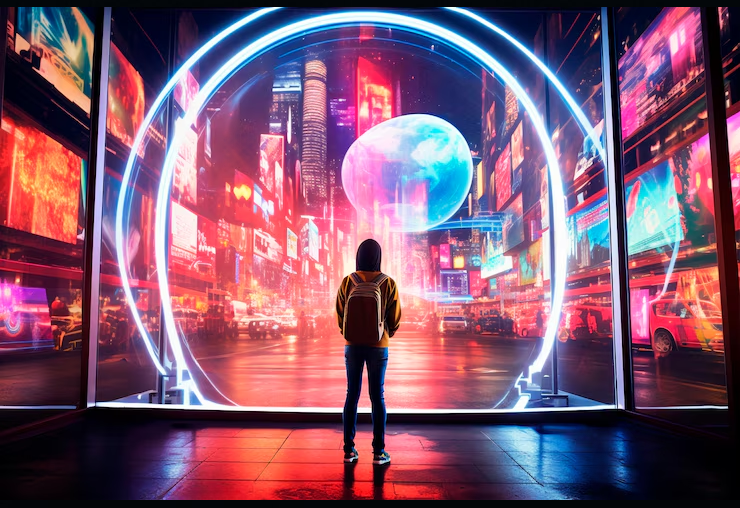In an era marked by rapid technological advancements and ever-evolving consumer preferences, the realm of 3D animation has emerged as a pivotal force in various industries, from entertainment to education and beyond. The dynamic world we live in necessitates the continuous evolution of creative practices and the adoption of future-proof strategies. This essay explores how 3D animation services are revolutionizing creativity, how they are adapting to a changing landscape, and the strategies that can ensure their sustained relevance.
The Rise of 3D Animation Services
Historical Context and Evolution
The journey of 3D animation began in the mid-20th century, but it wasn’t until the late 1980s and early 1990s that it started to gain significant traction with advancements in computer graphics. Films like “Toy Story” (1995), the first fully computer-animated feature film by Pixar, demonstrated the potential of 3D animation. This innovation opened new avenues for storytelling and visual creativity, setting the stage for what would become a transformative industry.
Current Landscape
Today, 3D animation services are integral to multiple sectors. The entertainment industry remains a primary beneficiary, with blockbuster films, television series, and video games relying heavily on 3D animation to create immersive experiences. Beyond entertainment, 3D animation is vital in fields such as education, healthcare, architecture, and advertising. In education, for example, 3D animations bring complex concepts to life, enhancing learning experiences. In healthcare, they are used for detailed anatomical visualizations and surgical simulations, improving both training and patient outcomes.
Technological Advancements
The rapid pace of technological development continues to propel 3D animation services forward. High-performance computing, cloud rendering, and artificial intelligence (AI) are among the key technologies driving the industry. AI, in particular, is transforming animation workflows, enabling automated rigging, motion capture, and even procedural content generation. These technologies not only enhance the quality and realism of animations but also significantly reduce production time and costs.
Adapting to a Dynamic World
Consumer Expectations and Interactivity
Modern consumers demand highly interactive and engaging content. This shift is particularly evident in the gaming industry, where players expect lifelike graphics and seamless interactions. To meet these expectations, 3D animation services are increasingly incorporating real-time rendering technologies, such as those used in Unreal Engine and Unity. These tools allow for dynamic, responsive environments that adapt to user inputs, enhancing the overall immersive experience.
Virtual and Augmented Reality
Virtual reality (VR) and augmented reality (AR) are reshaping the possibilities of 3D animation. VR provides fully immersive experiences, transporting users to entirely new worlds, while AR overlays digital elements onto the real world, enhancing our perception of reality. 3D animation services play a crucial role in creating the content for these technologies, from detailed virtual environments to interactive AR applications. As VR and AR continue to gain traction across various industries, the demand for high-quality 3D animation will only grow.
Cross-Industry Applications
The versatility of 3D animation services allows them to be applied across a wide range of industries. In architecture, 3D animations provide realistic visualizations of buildings and spaces before they are constructed, aiding in design and planning. In advertising, animated commercials captivate audiences and convey messages in a visually appealing manner. The ability to create realistic, engaging, and informative animations makes 3D animation services indispensable in a dynamic world.
Future-Proofing Strategies
Embracing New Technologies
To future-proof their services, 3D animation companies must stay abreast of emerging technologies. This involves continuous investment in research and development to explore the potential of AI, machine learning, and real-time rendering. For instance, AI-driven tools can automate complex tasks such as character animation and scene generation, allowing animators to focus on more creative aspects of their work.
Enhancing Collaboration and Workflow
In a globalized world, collaboration across borders is increasingly common. Cloud-based platforms and collaboration tools facilitate seamless communication and coordination among teams spread across different locations. By leveraging these tools, 3D animation services can streamline their workflows, enhance productivity, and ensure consistency in quality, regardless of geographical constraints.
Sustainable Practices
As environmental concerns become more prominent, the animation industry is also recognizing the importance of sustainability. Future-proofing creativity involves adopting eco-friendly practices, such as reducing energy consumption in rendering processes and utilizing renewable energy sources. Sustainable practices not only contribute to environmental conservation but also resonate with increasingly eco-conscious consumers.
Continuous Learning and Skill Development
The dynamic nature of the 3D animation industry necessitates continuous learning and skill development. Animators and other professionals must stay updated with the latest software, techniques, and trends. This can be achieved through regular training programs, workshops, and participation in industry conferences. By fostering a culture of continuous improvement, 3D animation services can maintain their competitive edge and adapt to changing market demands.
Diversification and Innovation
Diversification is a key strategy for future-proofing. By expanding their service offerings, 3D animation companies can tap into new markets and revenue streams. For example, branching out into virtual production for live-action films, creating interactive VR experiences, or developing educational content can provide new opportunities for growth. Innovation, on the other hand, involves pushing the boundaries of what is possible with 3D animation. This could mean exploring new styles, experimenting with non-traditional storytelling methods, or leveraging emerging technologies in novel ways.
Case Studies: Success Stories
Pixar Animation Studios
Pixar is a prime example of a company that has successfully future-proofed its creativity. From its pioneering work in computer animation to its continuous innovation in storytelling and technology, Pixar has consistently pushed the boundaries of what is possible in 3D animation. The company’s commitment to excellence, coupled with its ability to adapt to changing technologies and audience preferences, has cemented its position as a leader in the industry.
Unreal Engine and Epic Games
Epic Games’ Unreal Engine is another success story. Initially developed for video game creation, Unreal Engine has evolved into a versatile tool used in various industries, including film, architecture, and automotive design. Its real-time rendering capabilities and high-fidelity graphics have made it a preferred choice for creating immersive 3D environments. By continuously updating and expanding the engine’s capabilities, Epic Games has ensured its relevance and applicability across different domains.
Challenges and Considerations
Balancing Creativity and Technology
One of the primary challenges in the 3D animation industry is balancing creativity with technological advancements. While technology can significantly enhance the quality and efficiency of animations, it is ultimately the creativity and vision of the animators that breathe life into the final product. Ensuring that technology serves as an enabler rather than a replacement for creativity is crucial.
Intellectual Property and Ethical Issues
As 3D animation services become more sophisticated, issues related to intellectual property (IP) and ethics also come to the fore. Protecting original content from piracy and unauthorized use is a significant concern. Additionally, ethical considerations, such as the depiction of realistic yet fictional scenarios that could mislead audiences, need to be addressed. Establishing robust IP protections and ethical guidelines is essential for maintaining the integrity of the industry.
Accessibility and Inclusivity
Ensuring that 3D animations are accessible to all individuals, including those with disabilities, is an important consideration. This involves incorporating features such as subtitles, audio descriptions, and adaptable interfaces. Inclusivity in content creation also means representing diverse cultures, perspectives, and experiences. By prioritizing accessibility and inclusivity, 3D animation services can cater to a broader audience and promote social equity.
Conclusion
In a dynamic world, future-proofing creativity in 3D animation services requires a multifaceted approach. Embracing technological advancements, enhancing collaboration, adopting sustainable practices, and fostering continuous learning are all critical strategies. Additionally, diversification and innovation can open new avenues for growth and ensure long-term relevance. By addressing challenges such as balancing creativity with technology, protecting intellectual property, and promoting accessibility, the 3D animation industry can continue to thrive and push the boundaries of what is possible.
As we look to the future, the potential of 3d animation services is boundless. Whether creating captivating entertainment, revolutionizing education, or enhancing our everyday experiences, 3D animation will continue to be a driving force in shaping our dynamic world. The key lies in staying adaptable, innovative, and committed to excellence, ensuring that the creative possibilities of 3D animation are truly future-proofed.









